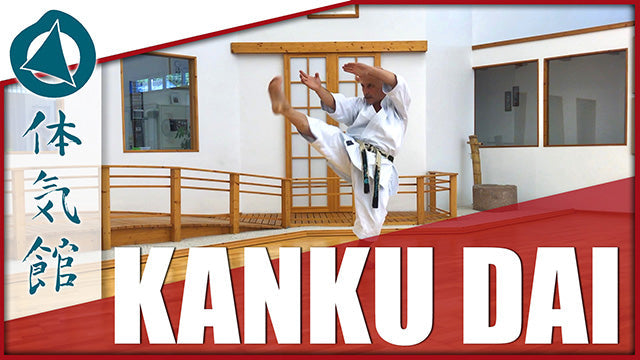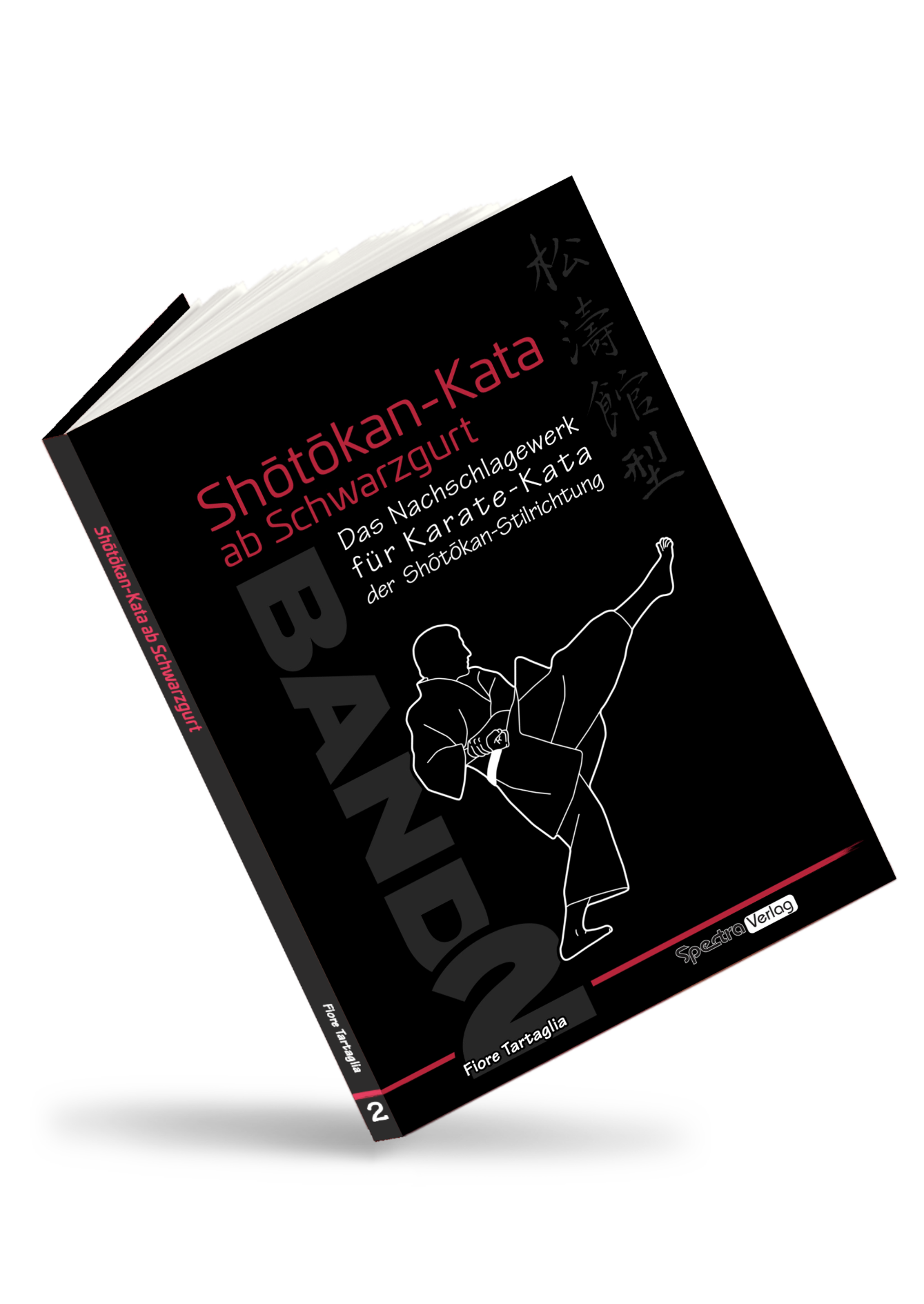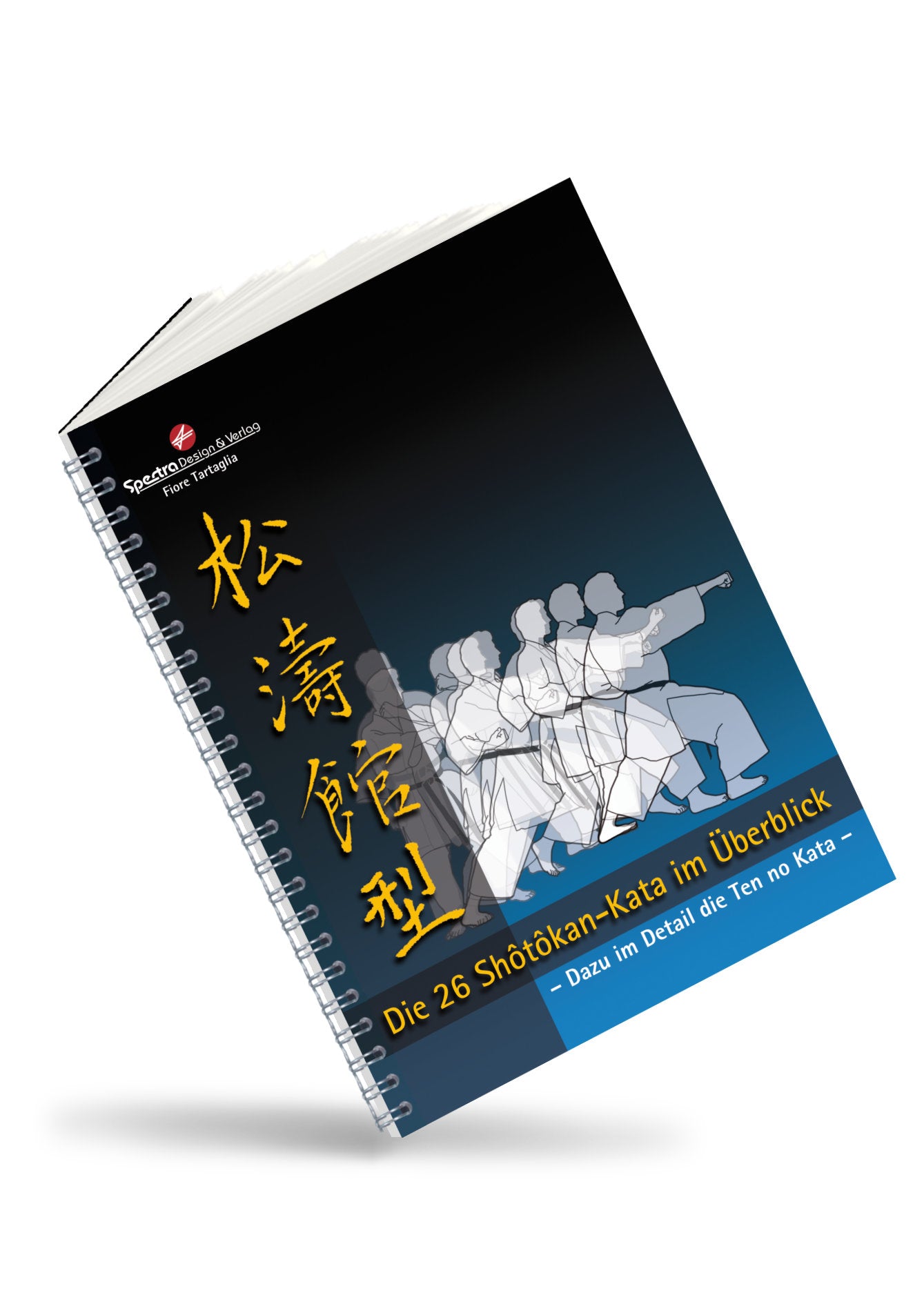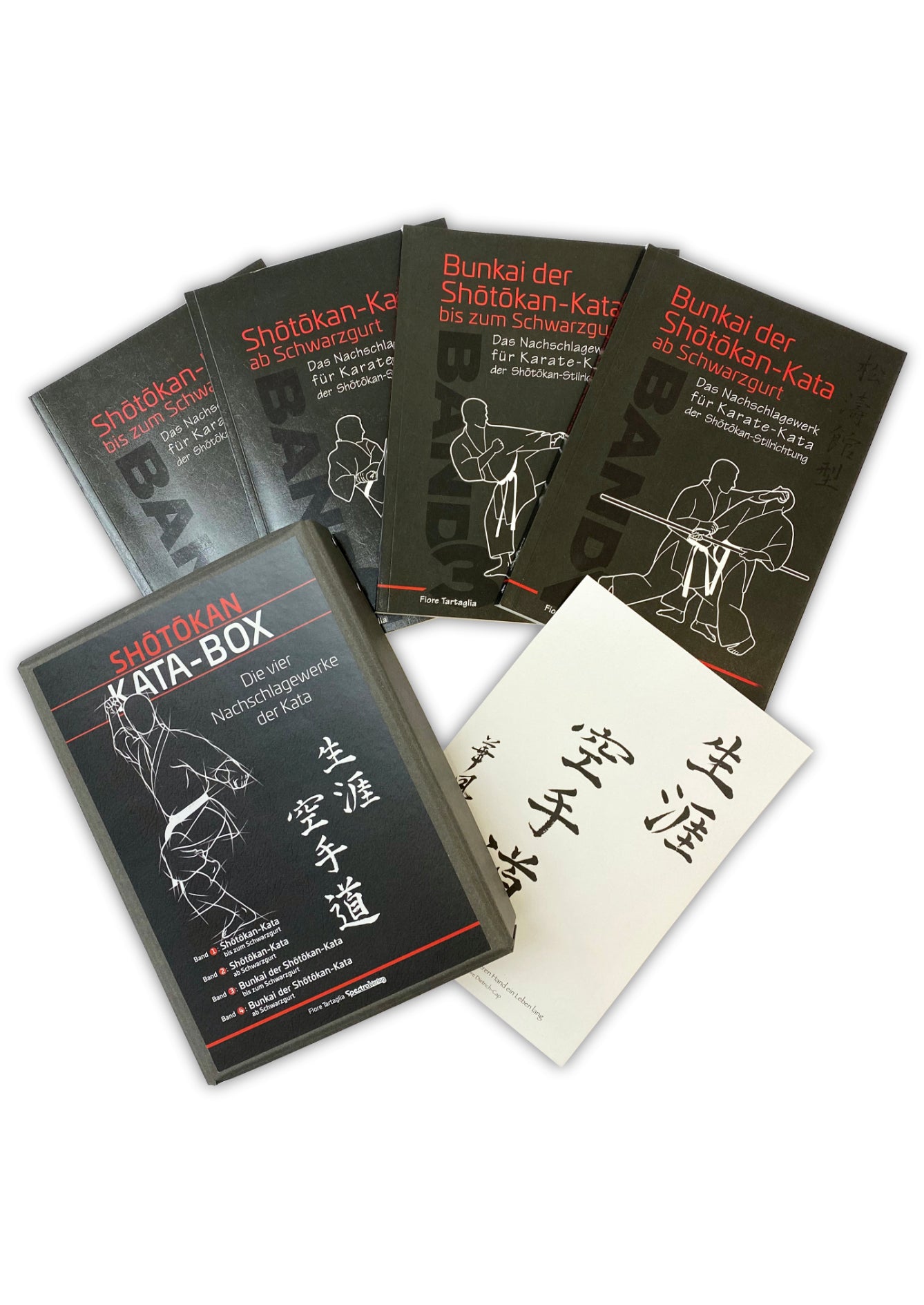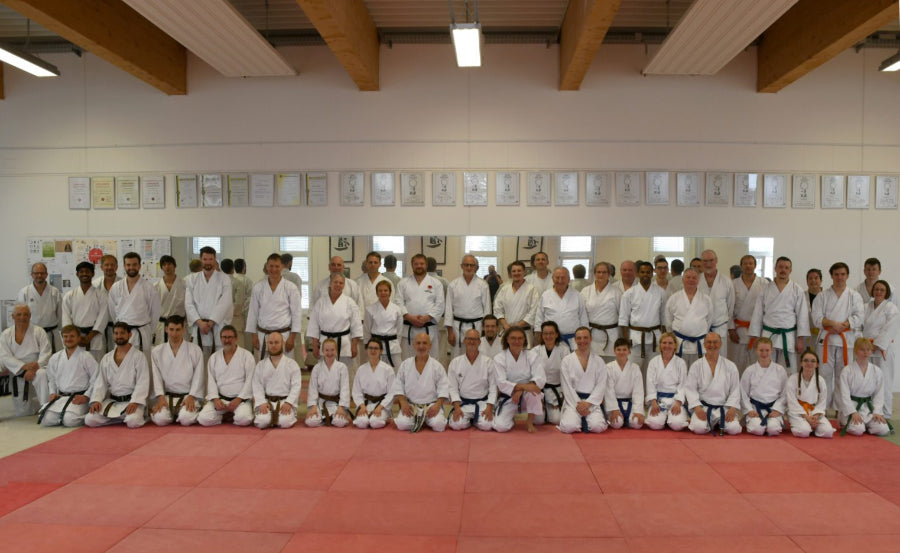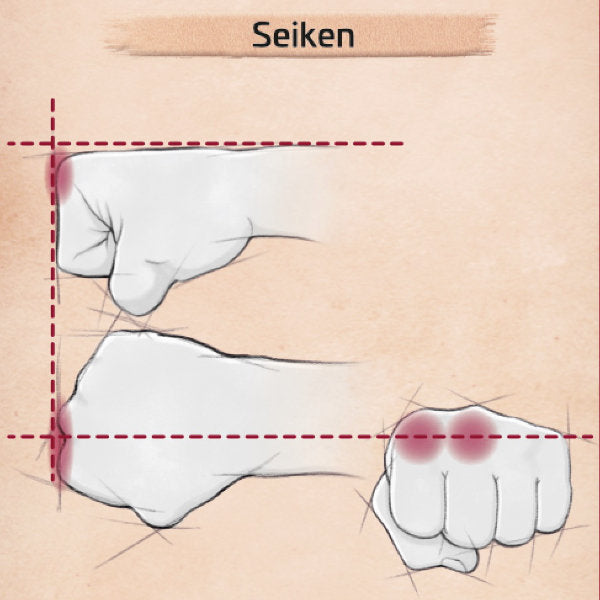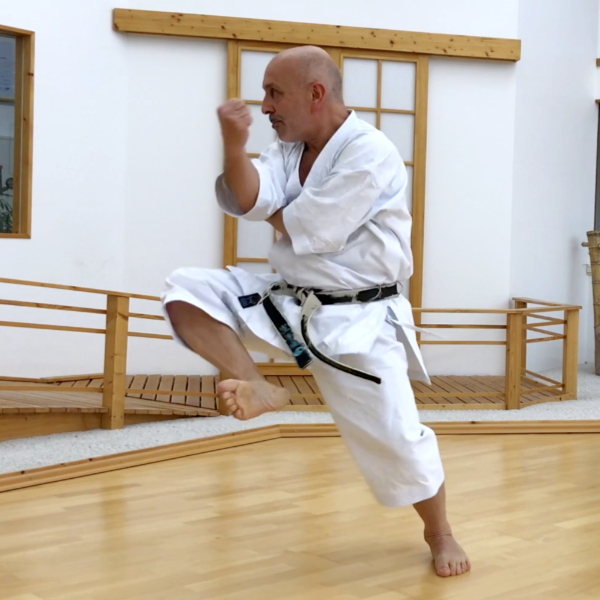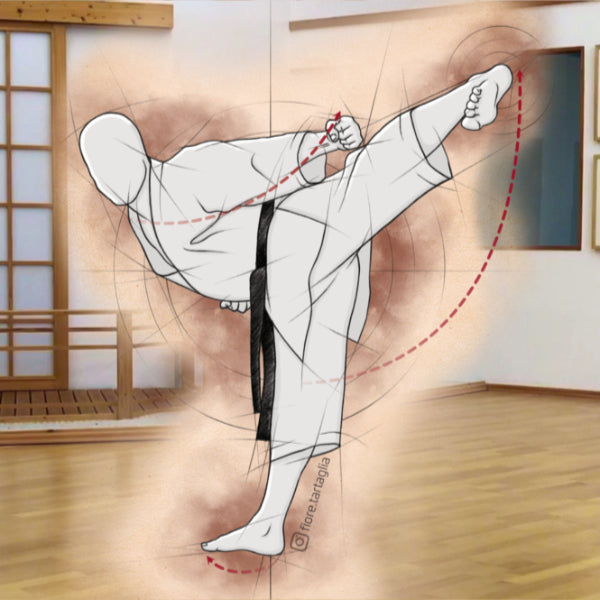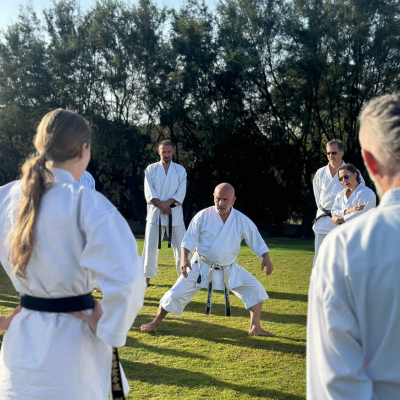KANKU SHŌ – LOOK AT THE SKY, LITTLE ONE.
The name Kankū derives from the original Kūshankū. The kata is still called this today in Wadō-ryū and Shōrin-ryū.
Unlike Kankū dai, Kankū shō is not based on the basic kata of the Shōtōkan school, but shows some very unusual techniques and a changing rhythm through fast and slow techniques.
The Tsukami-yose (grab and pull) techniques represent defenses against fist attacks: After blocking, the arm is held firmly and, as it is pulled in, countered with Mae geri. After the Mae geri, a sliding step is required before landing in Kōsa dachi.
The 360° jump can be a counterattack (Mikazuki tobi geri) after defending with Haishu uke. One lands low to avoid a second attack from behind. It is important to note that the landing position is shifted one position to the right in order to land on the starting point of the Enbusen. Furthermore, the Mikazuki geri automatically develops momentum in this direction during the jump. Jumping around after landing—resuming a lower Kōkutsu dachi—allows for a quick defense against a kicking technique, and the combination is completed with a forward counterattack (Shutō uke as an attacking technique). This point can also be interpreted differently: The Kōkutsu dachi can also be performed at the usual height.
Although Kankū shō is not as long as Kankū dai, its demands are so high that it is classified as an advanced kata. Its unusual movements offer the karateka new aspects and challenges. It is the only kata in the Shotōkan style that includes three jumps (an evasion, a counter, and a jump). This also requires strong leg muscles.
Duration: approximately 90 seconds
